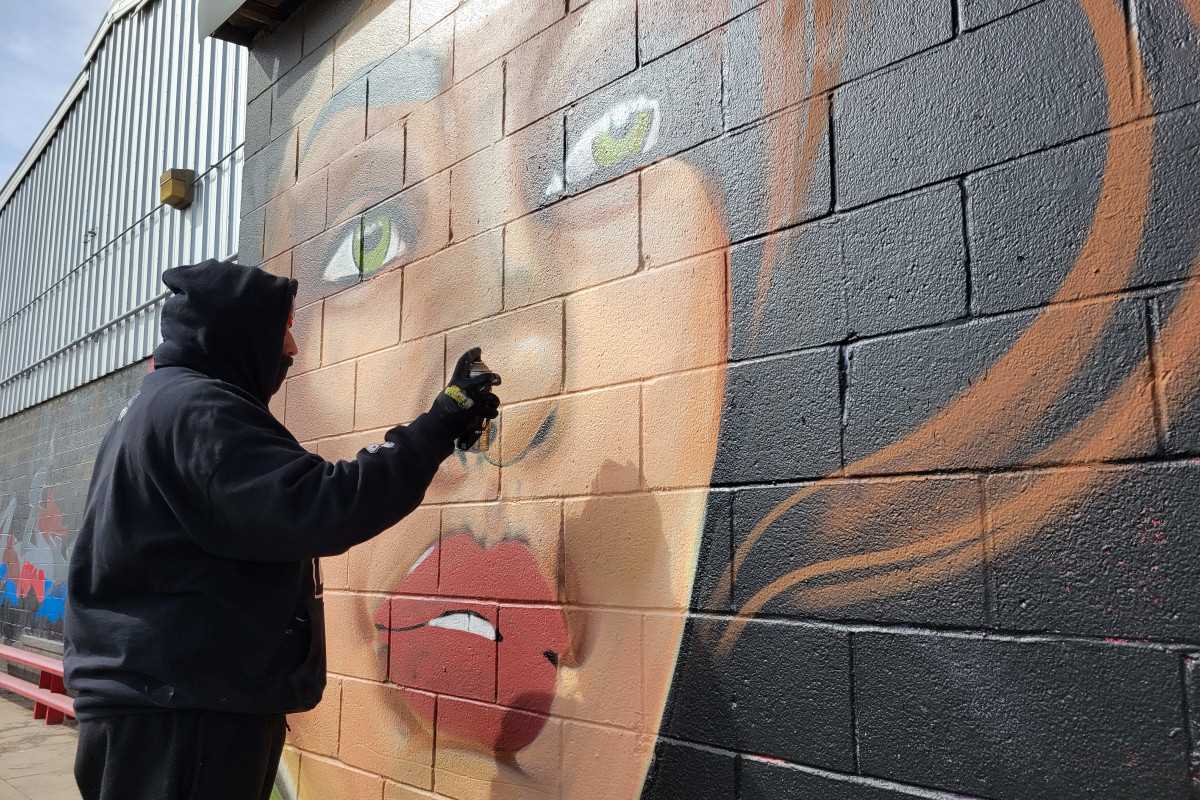
In the vibrant streets of our city, where concrete walls become canvases for expression, there exists an extraordinary community of local graffiti artists. These artists use spray paint, stencils, and their boundless creativity to transform ordinary spaces into mesmerizing works of art.
Driven by a desire to challenge societal norms and push the boundaries of artistic expression, the local graffiti artist defies conventional art galleries, opting instead to showcase their incredible talent in the public domain. From abandoned buildings to underpasses, these urban pioneers bring a sense of wonder and surprise to our daily lives.
What sets the local graffiti artist apart is their ability to captivate the viewer with their unique style and message. Each piece of street art tells a story, conveying social and political commentary, personal reflections, or simply provoking thought and conversation. With bold strokes and a fearless spirit, these artists reclaim public spaces, transforming them into engaging platforms for self-expression.
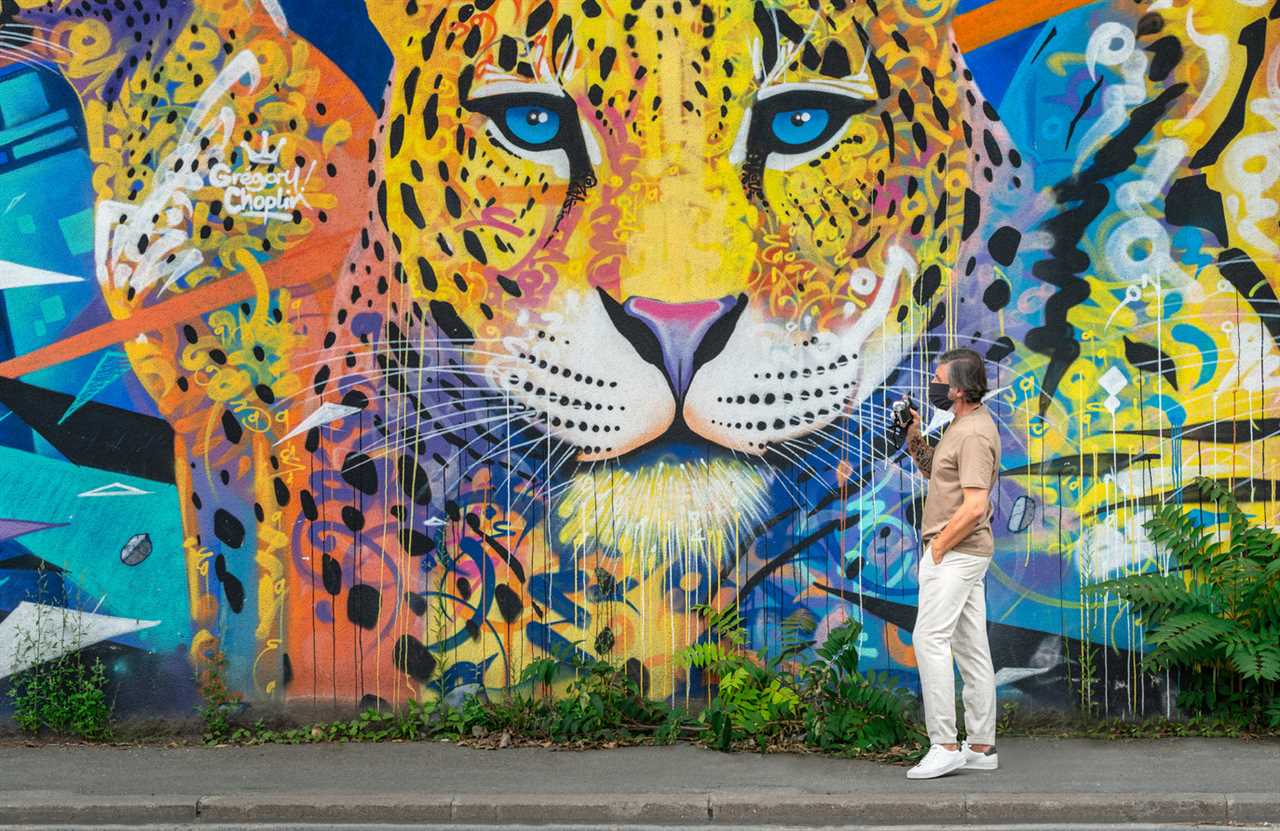
Graffiti art is a form of artistic expression that involves creating visual images or designs on walls, buildings, or other surfaces in public spaces. It is often associated with urban environments and is typically created using spray paint, markers, or stencils.
Graffiti has a long history and can be traced back to ancient civilizations, where it was used to decorate public spaces and convey messages. In modern times, graffiti art has evolved into a distinct form of street art that is often used to make political or social statements, or simply to beautify public spaces.
Unlike vandalism or illegal graffiti, graffiti art is created with the permission of property owners or as part of a sanctioned public art project. It is a legitimate form of artistic expression that can transform ordinary spaces into vibrant works of art.
Graffiti art is often vibrant, colorful, and visually striking. It can incorporate a range of styles and techniques, from realistic imagery to abstract designs. Many graffiti artists employ a combination of text and imagery to convey their message.
While some people may view graffiti art as a form of vandalism or destruction of public property, others see it as a powerful form of self-expression and a way to bring art to the streets. Regardless of personal opinions, graffiti art continues to be an important part of urban culture and a reflection of the world we live in.
The Rise of Local Graffiti Artists
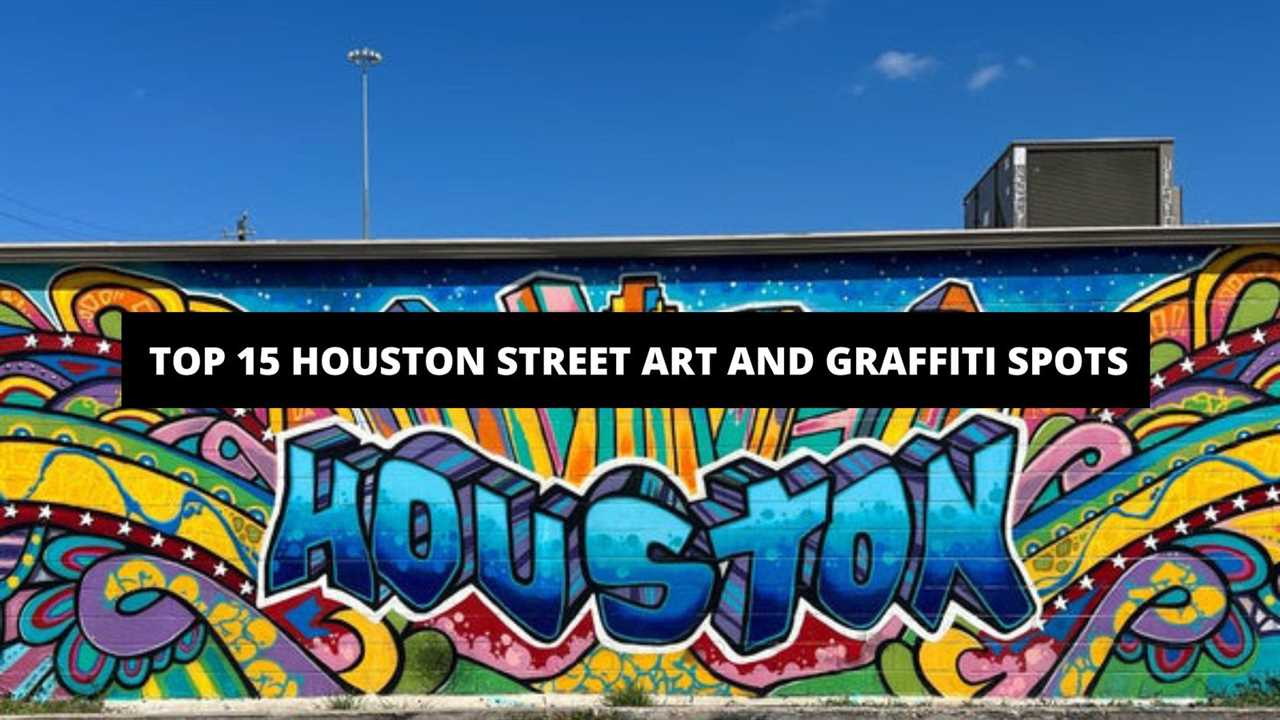
Graffiti has long been considered a form of rebellious art, often associated with defacing public property and vandalism. However, in recent years, there has been a shift in perspective, with a growing recognition of graffiti as a legitimate art form.
One of the most notable developments in this shift is the rise of local graffiti artists. These artists are not only talented in their craft but are also deeply connected to their communities. They use their artwork to reflect the unique culture, history, and struggles of the neighborhoods in which they reside.
Local graffiti artists often utilize the walls of abandoned buildings, alleyways, and other urban spaces as their canvas. They transform these neglected areas into vibrant works of art, bringing color and life to forgotten corners of the city. Their artwork becomes a form of self-expression, a way to communicate their ideas and emotions to the world.
What sets local graffiti artists apart is their ability to connect with the people around them. Their artwork resonates with the locals, as it represents their shared experiences and challenges. Many local graffiti artists also engage with the community directly, organizing workshops, events, and exhibitions to involve and inspire others.
Furthermore, the rise of social media has played a significant role in the visibility and recognition of local graffiti artists. Platforms like Instagram and Facebook have provided these artists with a global stage to showcase their work. They can now reach a wider audience, including art enthusiasts and collectors from around the world.
The rise of local graffiti artists signifies a changing perception of street art. It is no longer seen as mere vandalism but as a powerful form of artistic expression that reflects the beauty and diversity of urban communities. As these artists continue to push boundaries and challenge conventions, they are reshaping the art world and leaving a lasting impact on their neighborhoods.
The Process Behind Graffiti Art
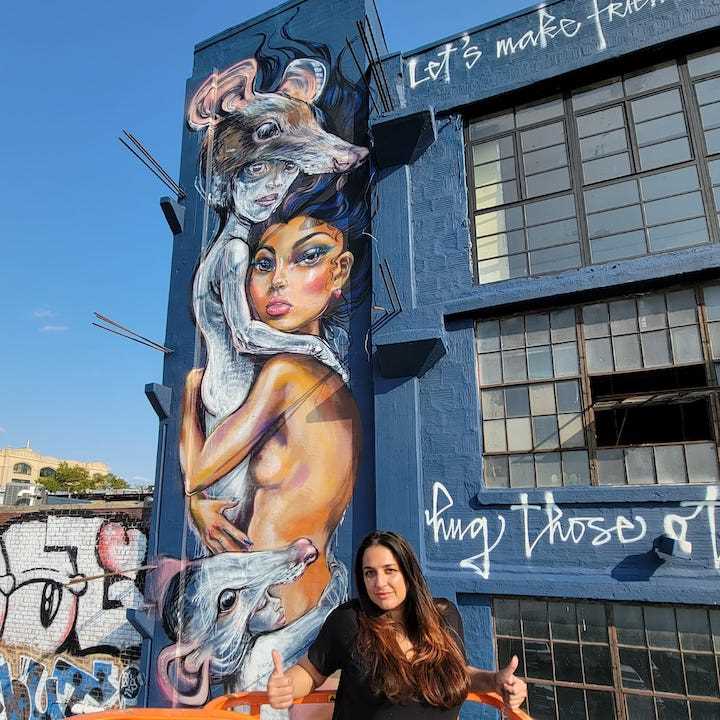
Graffiti art is created through a unique and intricate process that requires a combination of skill, creativity, and spontaneity. It involves several steps, from conceptualization to execution, that transform ordinary walls into captivating pieces of urban art.
Conceptualization: The first step in creating graffiti art is the conceptualization phase. Graffiti artists often draw inspiration from their surroundings, current events, or personal experiences. They brainstorm ideas and develop a concept for their work, taking into consideration the message they want to convey through their art.
Design and Sketching: Once the concept is established, the artists begin sketching their design on paper. They carefully plan the composition, using their artistic skills to create a visually appealing layout. This stage allows them to experiment with different styles, colors, and techniques before transferring the design onto the wall.
Location Selection: Choosing the right location is crucial for graffiti artists, as it determines the visibility and impact of their artwork. They scout for suitable walls, seeking permission from property owners or looking for legal graffiti spots. Some artists prefer abandoned buildings or train yards, while others focus on public spaces with high foot traffic.
Materials and Tools: Graffiti artists need a variety of materials and tools to bring their vision to life. Spray paint is the primary medium used, available in a wide range of colors and finishes. Artists also use stencils, brushes, rollers, and markers to add texture and detail to their work. Protective gear such as masks and gloves may be used to ensure safety while working with the materials.
Execution: The execution phase is when the artists finally begin painting their design on the chosen wall. They start by preparing the surface, removing any dirt or debris that may hinder the adhesion of the paint. With steady hands and a keen eye for detail, they begin layering colors, adding depth and dimension to their artwork. This process often involves blending and shading techniques to create life-like images or vibrant abstract patterns.
Finishing Touches: After completing the main painting, artists add finishing touches to their artwork. They may add additional layers of paint, highlights, or shadows to enhance certain elements. Some artists incorporate other techniques, such as graffiti tags or stencils, to sign their work or add an extra layer of complexity.
Presentation and Preservation: Once the artwork is finished, graffiti artists take pride in presenting it to the public. They may photograph their work, share it on social media, or even organize exhibitions to showcase their talent. However, graffiti art is often vulnerable to removal or damage, so artists may take measures to protect their work, such as applying a clear coat or seeking permission to preserve it.
Graffiti art is a dynamic and evolving form of expression, defined by its boldness and rebellious spirit. The process behind creating graffiti art is a testament to the dedication and skill of the artists, who work tirelessly to leave their mark on the urban landscape.
The Impact of a Mural
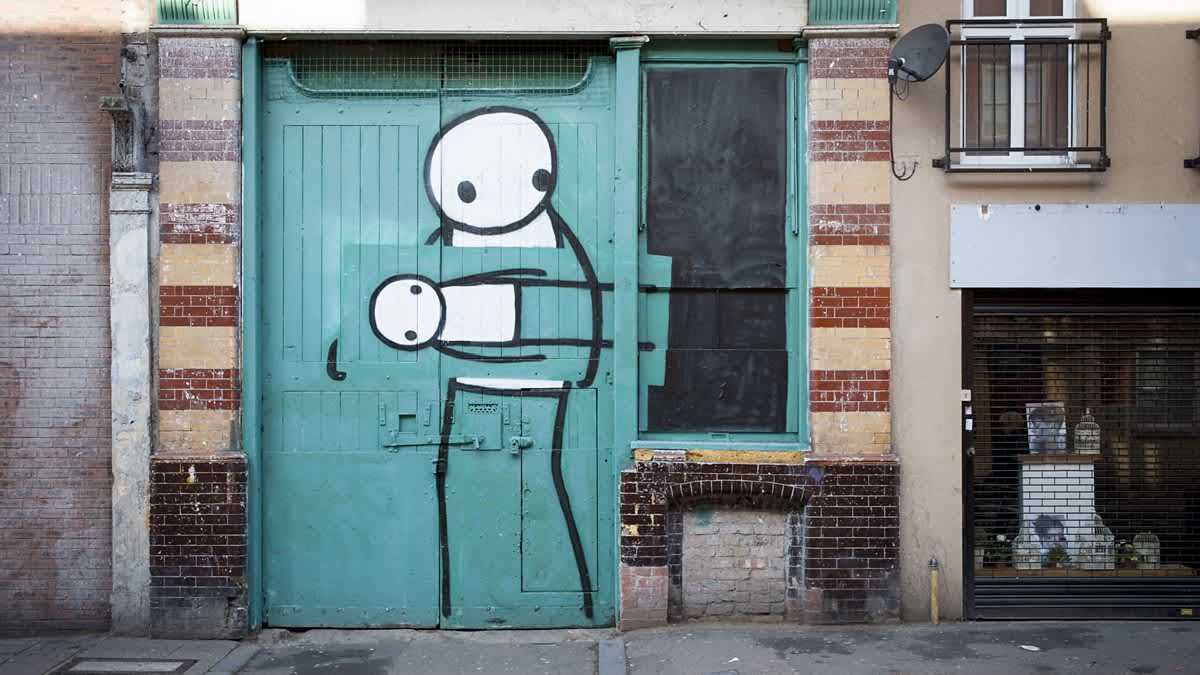
Murals have the power to transform a neighborhood and make a significant impact on the local community. These large-scale artworks can bring vibrancy and creativity to otherwise mundane urban spaces.
One of the biggest impacts of a mural is its ability to foster a sense of community pride and ownership. When the local community is involved in the creation of a mural, whether through painting or conceptualizing the design, it creates a strong connection to the artwork and a sense of pride in the neighborhood.
In addition to community pride, murals can also act as storytelling devices. They have the power to reflect the history, culture, and identity of a neighborhood. A mural can serve as a visual representation of the local community’s values, beliefs, and struggles. It can also be a platform for social commentary and activism.
Murals can also be catalysts for economic growth. A well-executed, visually striking mural can attract visitors and tourists, generating foot traffic for local businesses. Murals can transform forgotten or neglected areas into vibrant and thriving spaces, breathing new life into a neighborhood.
Furthermore, murals can have a positive effect on the mental well-being of residents. Studies have shown that exposure to public art, including murals, can reduce stress, improve mood, and increase overall happiness. Murals bring beauty and creativity to everyday surroundings, making the environment more visually appealing and uplifting.
Exploring the Style of Local Graffiti Artists
Graffiti art showcases a wide range of unique and diverse styles, and local graffiti artists bring their own distinct flavor to the urban landscape. From vibrant and colorful murals to intricate stencil work, the style of these artists reflects their individuality and creativity.
One common style seen in the work of local graffiti artists is the use of bold and expressive colors. Bright hues and eye-catching combinations help the artwork stand out, drawing attention and sparking curiosity. These artists often experiment with different color palettes, using shades that complement or contrast with each other to create visually stunning compositions.
Another common style is the use of complex and intricate designs. Local graffiti artists often incorporate elaborate patterns and details into their artwork, adding depth and texture to their creations. This attention to detail showcases the artists’ skill and dedication, as well as their ability to transform simple surfaces into captivating works of art.
The style of local graffiti artists often reflects the culture and spirit of the community they belong to. Through their artwork, they tell stories, share messages, and make a statement about their surroundings. Their art can be a form of self-expression, a way to challenge norms, or a means of reclaiming public spaces.
| Examples of Local Graffiti Artists’ Styles | Description |
|---|---|
 |
This graffiti artist is known for their use of bright and contrasting colors, creating a vibrant and energetic atmosphere in their artwork. |
 |
This artist’s style is characterized by intricate stencil work, incorporating detailed patterns and textures into their graffiti. |
 |
Using a combination of spray paint and brushes, this artist creates realistic and lifelike portraits, adding a touch of humanity to the urban environment. |
The Controversy Surrounding Graffiti
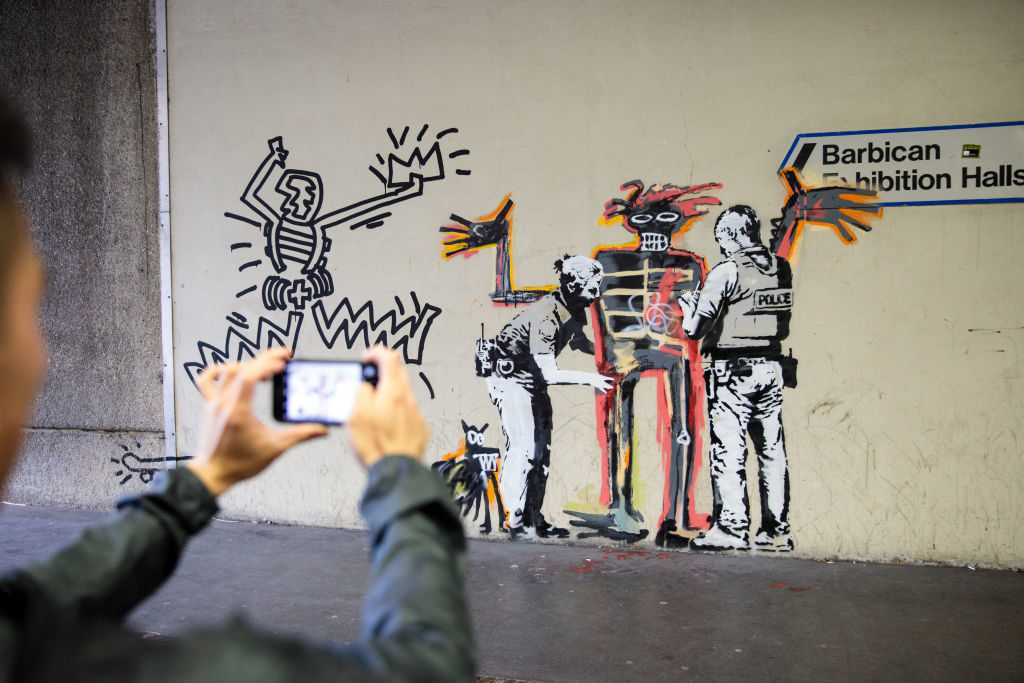
Urban street art has always been a subject of controversy. While some view it as a form of creative expression that adds vibrancy to a city, others see it as a form of vandalism that defaces public spaces. This divide has led to heated debates and conflicting opinions.
One of the main arguments against graffiti is that it is illegal. Many cities have strict laws against defacing public property, and graffiti artists can face fines, community service, or even imprisonment if caught in the act. This has led to a negative perception of graffiti as an illegal activity that promotes lawlessness and disrespect for public spaces.
However, there are those who argue that graffiti can be a powerful form of social and political commentary. They see it as a form of art that challenges the status quo and gives a voice to marginalized communities. Graffiti can often address issues such as inequality, racism, and environmental degradation. In this sense, it can be seen as a form of protest art that sparks important conversations and raises awareness about important social issues.
The Evolution of Graffiti
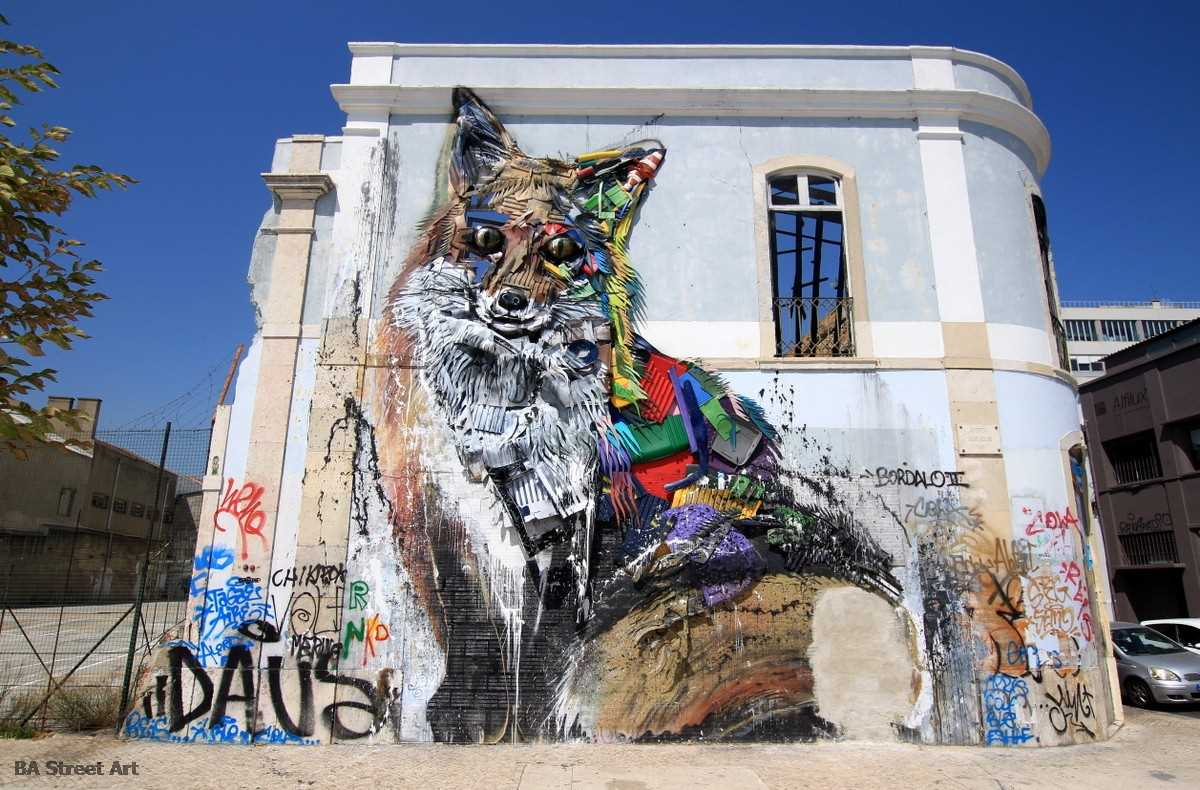
Graffiti has evolved over the years, moving from simple tags and graffiti “bombs” to intricate murals and stencil art. This evolution has blurred the line between graffiti and street art, with many artists gaining recognition and acclaim for their work. Some cities have even embraced graffiti as a form of cultural expression, creating designated areas where artists can legally create their art.
The Role of Local Artists
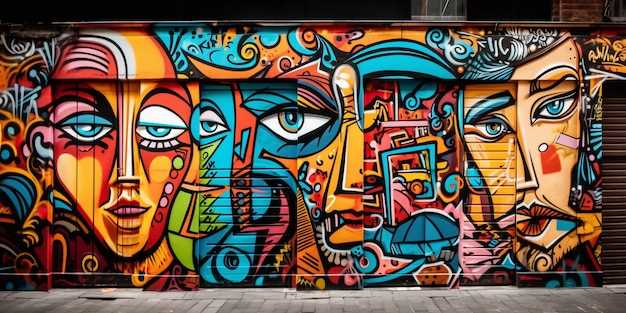
Local graffiti artists play a key role in the street art scene. They are often passionate about their communities and use their art to represent the local culture and identity. They can bring neglected areas to life and create a sense of pride within the community. However, their work is not always appreciated by everyone, and they can face backlash from local authorities and the public.
Preserving Graffiti Art
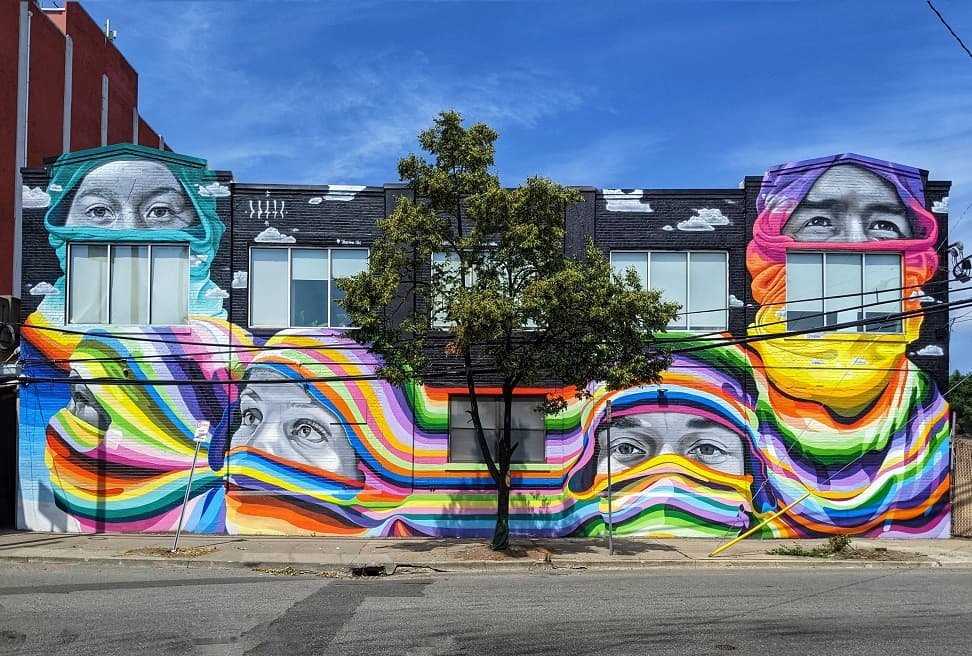
Graffiti art is a vibrant and unique form of expression that adds character and liveliness to urban environments. Over the years, cities around the world have started to recognize the cultural and artistic value of graffiti, leading to efforts to preserve and protect these artworks.
Recognizing Cultural Significance
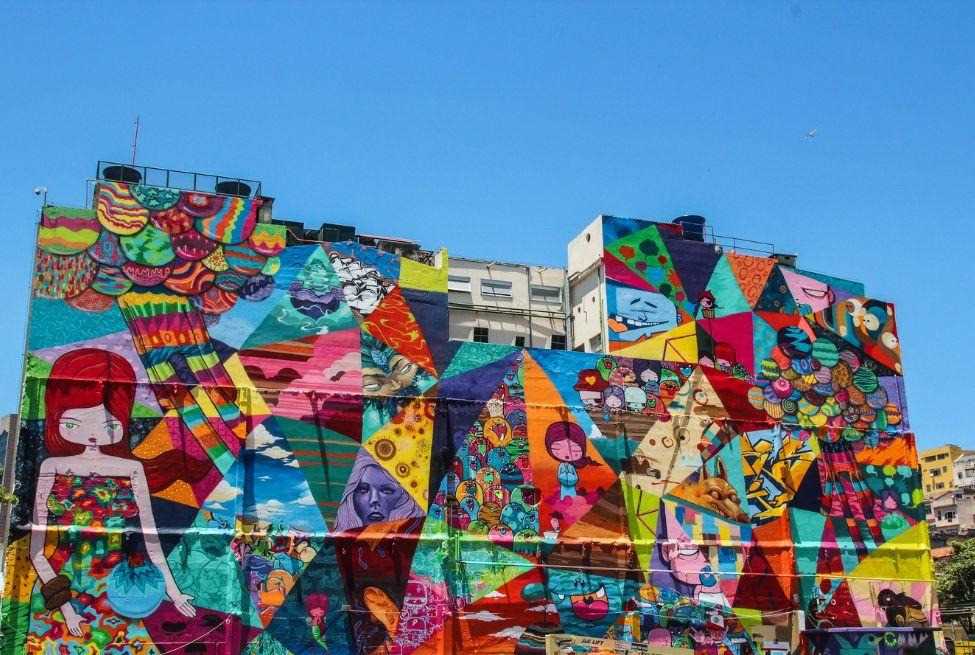
Graffiti art has evolved from being seen as mere vandalism to being recognized as an important part of urban culture. Many graffiti artists use their work to reflect social and political issues, creating powerful messages that resonate with local communities. By preserving these artworks, cities can not only protect a form of artistic expression but also honor the diverse voices and perspectives within their communities.
Creative Spaces
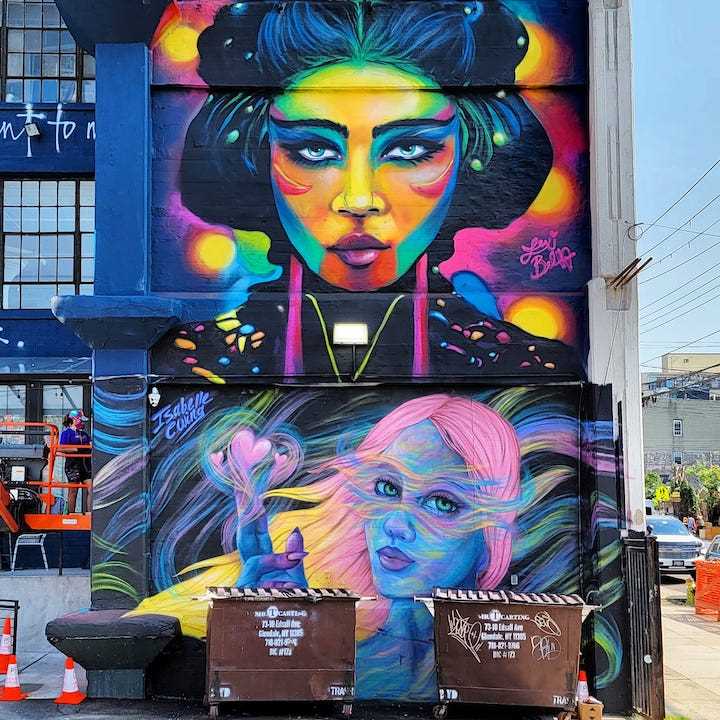
One approach to preserving graffiti art is by providing designated spaces where artists can freely create without fear of their work being removed or destroyed. These areas, often referred to as “legal walls,” allow artists to showcase their skills and contribute to the artistic landscape of the city. By offering these spaces, cities can strike a balance between allowing artistic freedom and maintaining the appearance of public spaces.
In addition to legal walls, some cities have adopted the practice of designating entire neighborhoods or districts as graffiti art zones. These areas serve as open-air galleries, where artists are encouraged to create and visitors can appreciate the vibrant and ever-changing works. This approach not only preserves the art but also attracts tourists and boosts the local economy.
Documentation and Conservation
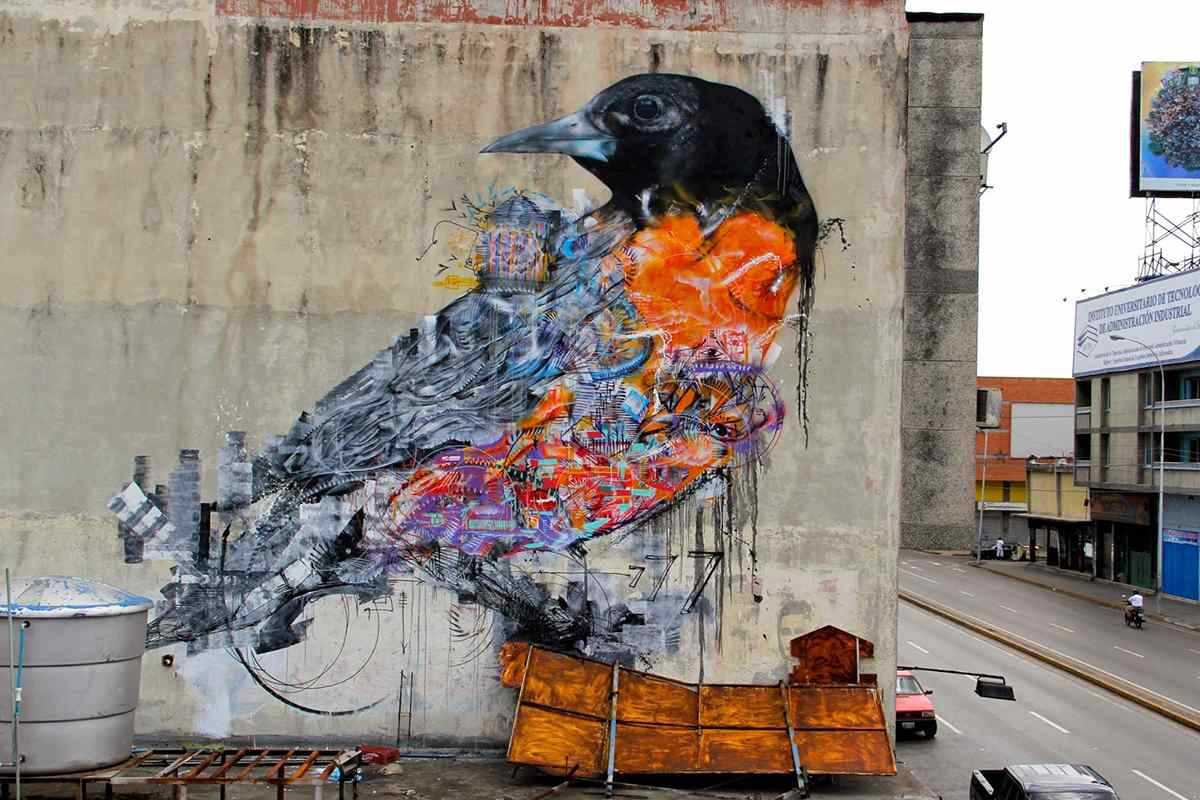
Another way to preserve graffiti art is through documentation and conservation efforts. This involves photographing and cataloging graffiti artworks, creating a digital archive that can be easily accessed and shared. By documenting these artworks, cities can capture the transient nature of graffiti and ensure that they are not lost to the passage of time or the elements.
Conservation techniques, such as using protective coatings or materials, can also help extend the lifespan of graffiti art. By applying these treatments, cities can safeguard the artworks from natural deterioration and prevent unauthorized removal or defacement.
Preserving graffiti art is a complex task that requires a delicate balance between artistic freedom and urban maintenance. However, by recognizing the cultural significance and implementing strategies to protect and conserve these artworks, cities can ensure that graffiti art continues to thrive and enrich the urban landscape for future generations.
The Legal Challenges Faced
The practice of urban street art, including graffiti, often faces legal challenges due to its controversial nature. While many consider graffiti as a form of artistic expression, it is illegal in most places to paint or draw on public or private property without permission. This has made it difficult for local graffiti artists to pursue their passion and showcase their work legally.
One of the main legal challenges faced by graffiti artists is the risk of being arrested or fined for vandalism. Law enforcement agencies often crack down on illegal street art, considering it a defacement of public spaces. Graffiti artists need to be cautious about where and when they create their art to avoid legal consequences.
Another legal challenge faced by graffiti artists is the lack of opportunities for public display of their work. Art galleries and museums typically do not exhibit graffiti due to its association with illegal activities. This limits the exposure and recognition that graffiti artists can receive for their work, making it harder for them to establish themselves as legitimate artists.
In some cases, graffiti artists may seek permission to paint on certain walls or buildings, but obtaining the necessary permits can be a complex process. Property owners, local authorities, and community members may have different opinions on graffiti art and its impact on the neighborhood. This can create legal challenges and delays in acquiring permits, further limiting the opportunities for graffiti artists.
Tackling the Legal Challenges
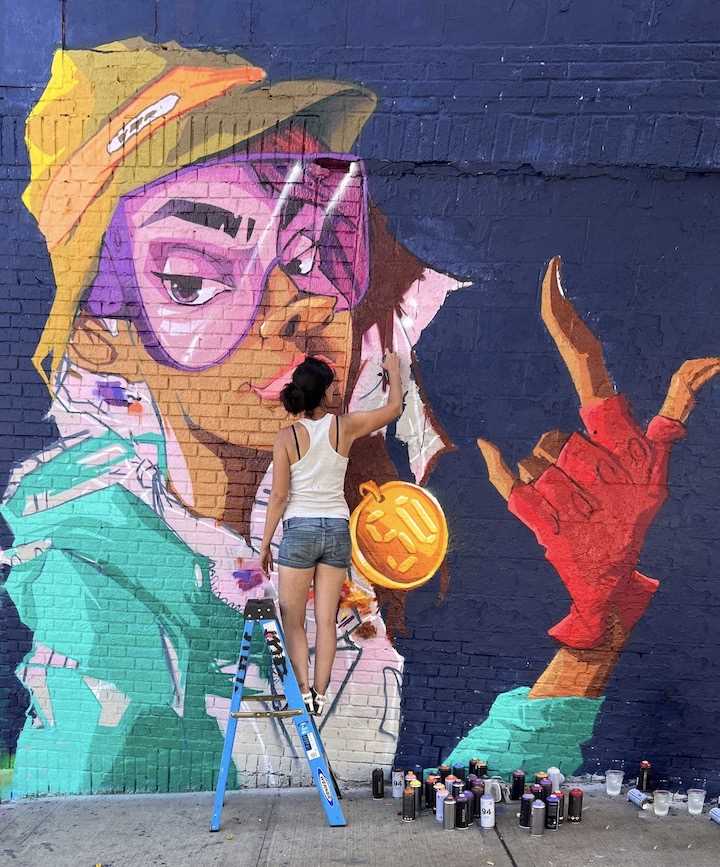
Despite the legal challenges faced by graffiti artists, there are efforts being made to create more opportunities for legal street art. Some cities have designated areas or walls where graffiti artists can paint without breaking the law. These designated areas help promote street art as a legitimate art form and provide a platform for artists to showcase their skills.
Non-profit organizations and community groups are also working to change perceptions of graffiti art and provide legal avenues for artists. They organize street art festivals and events that invite graffiti artists to create public art in a legal and supported environment.
Additionally, some graffiti artists have transitioned from illegal street art to commissioned mural painting. By working with property owners and obtaining proper permissions, these artists are able to create large-scale and legal murals that contribute to the urban landscape.
While the legal challenges faced by local graffiti artists are significant, there is hope for a more inclusive and accepting environment for urban street art. By recognizing graffiti as a legitimate form of artistic expression and creating opportunities for artists to practice their craft legally, cities and communities can enhance their cultural landscapes and support local talent.
Community Engagement through Graffiti Art

Graffiti art has become a powerful tool for community engagement in urban areas. Local graffiti artists not only bring vibrant and visually stunning artwork to the streets, but they also create a sense of belonging and pride within the community. Through their art, they are able to convey important messages, express emotions, and spark conversations.
Creating a sense of identity: Graffiti art allows communities to express their unique identity and culture. By incorporating local symbols, images, and stories into their artwork, graffiti artists bring a sense of authenticity and belonging to the space. This helps residents and visitors connect with the community on a deeper level and fosters a sense of pride and ownership.
Making public spaces more vibrant: Graffiti art has the power to transform dull and lifeless public spaces into vibrant and visually appealing areas. By adding colorful murals and artworks to otherwise monotonous walls and buildings, graffiti artists breathe new life into the community. This not only makes the spaces more enjoyable for residents and visitors but also attracts attention and tourists, contributing to the local economy.
Sparking conversations and addressing social issues: Graffiti art often serves as a platform to address social issues and initiate conversations within the community. Through their art, graffiti artists can draw attention to important topics such as inequality, environmental concerns, or political activism. By provoking thoughts and inspiring discussions, graffiti art helps to raise awareness and bring about positive change.
Fostering a sense of community: Graffiti art brings people together by creating shared experiences and opportunities for connection. Local residents often engage with graffiti artists while they are working on their murals, sparking conversations and forming new relationships. This not only strengthens the sense of community but also encourages collaboration and participation in other community initiatives.
Encouraging creativity and self-expression: Graffiti art provides an outlet for creativity and self-expression, particularly for young people who may feel marginalized or unheard. By engaging with graffiti art, individuals can explore their artistic talents, experiment with different styles, and express their thoughts and emotions in a meaningful way. This can boost self-confidence and empower individuals to find their voice within the community.
Graffiti Art as an Expression of Identity
Every graffiti artist has their own unique style, message, and signature. Some artists use pseudonyms or tags to protect their identity and maintain a sense of anonymity. This allows them to freely express their thoughts, feelings, and perspectives without fear of repercussions. By creating art in public spaces, they claim their presence and make a bold statement about who they are.
The Power of Symbolism
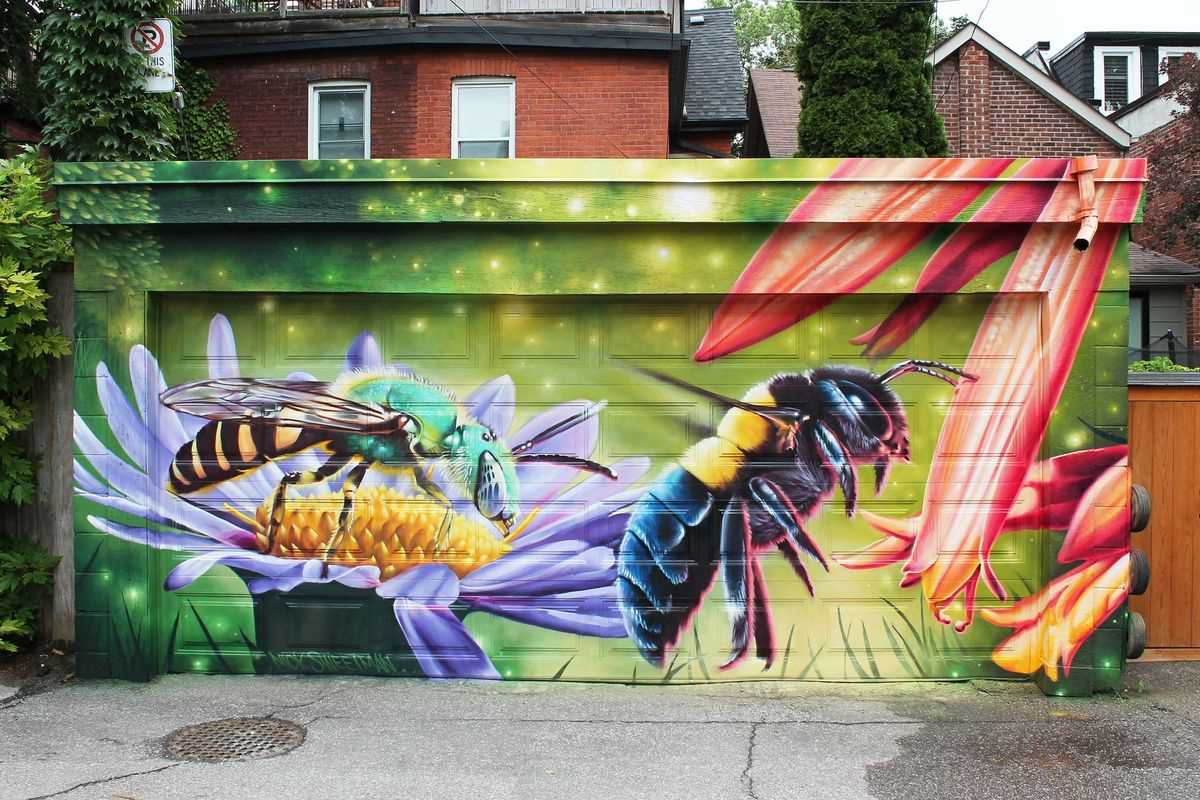
Graffiti art often incorporates powerful symbols and imagery that resonate with the artist’s identity. These symbols can represent personal experiences, cultural heritage, or social and political issues. Through their art, graffiti artists can communicate their beliefs and values, and connect with others who share similar sentiments.
Symbols such as flowers, birds, or butterflies may be used to represent freedom, beauty, and transformation. On the other hand, graffiti art might also incorporate darker imagery, such as skulls or chains, symbolizing rebellion or resistance against societal norms. Each symbol tells a story and adds depth to the artist’s work.
Preserving History and Community
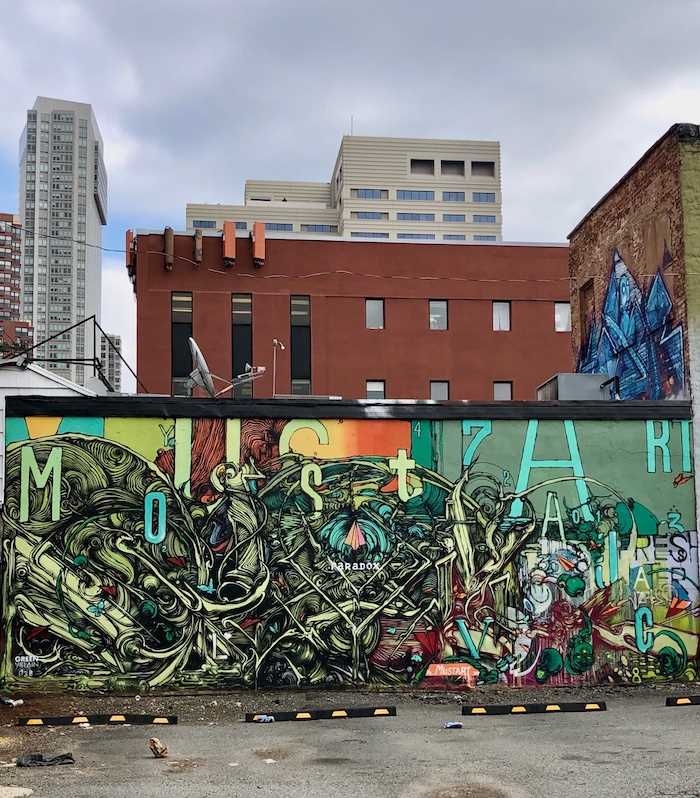
Graffiti art is not just about individual expression; it is also a way for communities to preserve their history and culture. In some neighborhoods, graffiti art serves as a visual record of the local culture, documenting the struggles, triumphs, and identities of the people who live there.
Local graffiti artists often use their art to highlight social issues and give voice to marginalized communities. They may address topics such as gentrification, racism, or inequality, shedding light on the lived experiences of those who are often unheard.
Graffiti art is a powerful form of self-expression that allows individuals to assert their identity, speak their truth, and preserve the history and culture of their communities. Through their art, graffiti artists create a visual dialogue, inviting viewers to reflect on their own identities and the world around them.

I am a mural enthusiast and a fervent admirer of street art. Rather than creating murals myself, I am passionate about collecting them. My love for street art knows no bounds. I am dedicated to curating and cherishing these artworks that grace the streets. My collection stands as a testament to my profound appreciation for this form of artistic expression.
read about me



